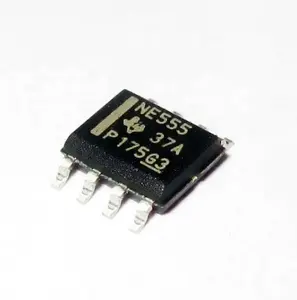
NE555DR NE555D NE555DX 8-SOIC Integrated Circuits IC Clock/Timing Programmable Timers And Oscillators PCBA Service



















The 555 timer IC is a versatile and widely used integrated circuit, known for its reliability in creating time delays or oscillation. This small chip is a staple in the electronics world due to its ease of use and functional flexibility.
At the heart of the 555 timer IC are components such as resistors, capacitors, transistors, and diodes. These are meticulously integrated on a silicon chip, allowing it to perform various functions, from acting as a simple timer to forming part of complex circuits.
There are several variants of the 555 timer IC, including the standard NE555 and its CMOS counterparts, which are designed to meet diverse requirements in power consumption and electrical characteristics. The versatility of the 555 timer IC makes it suitable for a wide range of applications, from DIY projects to industrial solutions.
The 555 timer IC is commonly used in timing circuits, pulse generation, and as an oscillator. Its applications extend to creating delays, flip-flop operations, and even in pulse-width modulation (PWM) circuits, which are essential in controlling the power supplied to electrical devices.
One of the main advantages of the 555 timer IC is its simplicity in design, which facilitates ease of use. Additionally, its ability to function across a wide range of voltages and its stability over a broad temperature range make it an ideal choice for various electronic applications.
When sourcing 555 timer ICs, it is crucial to consider factors such as operating temperature, voltage range, and output current. These specifications ensure that the chosen IC meets the requirements of the intended application without the need for external components.